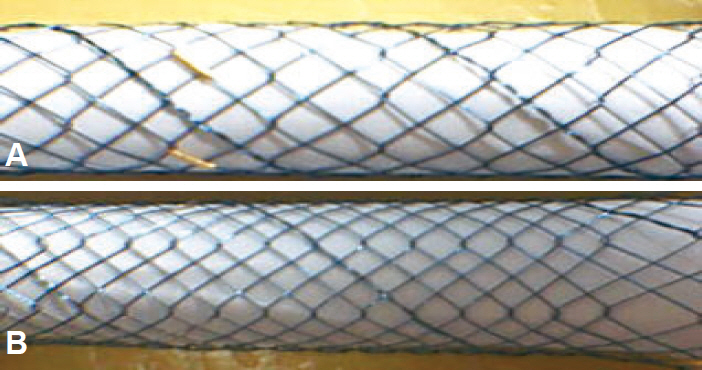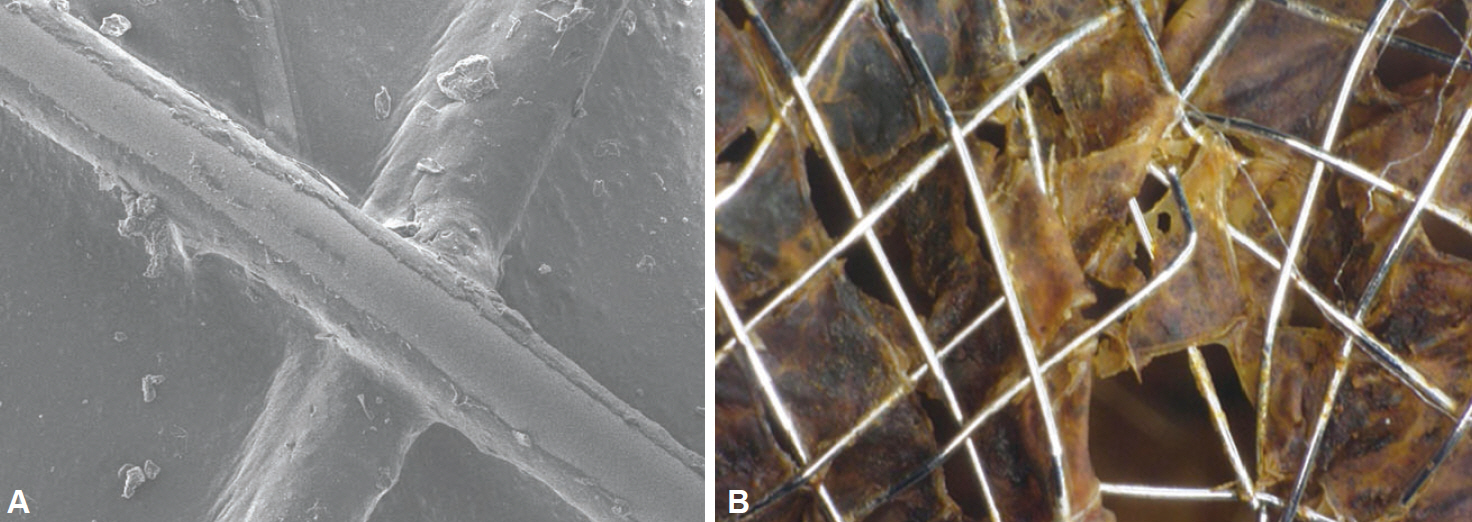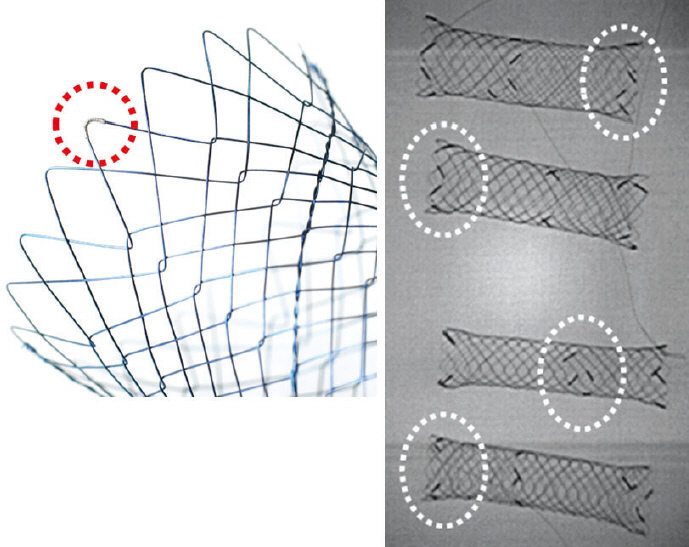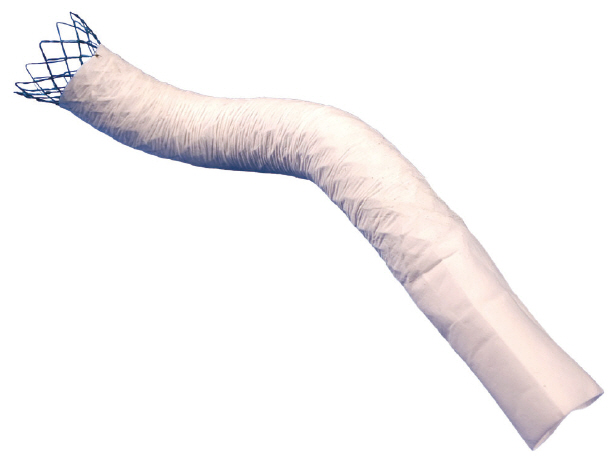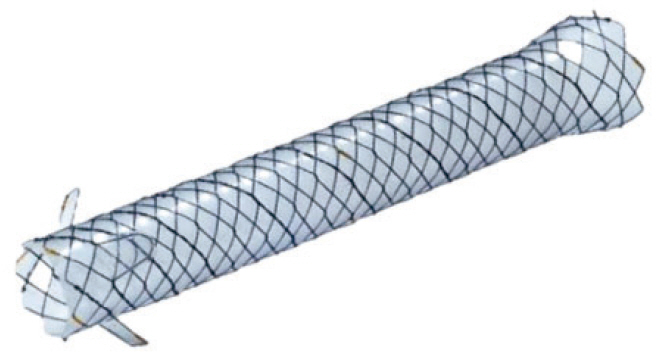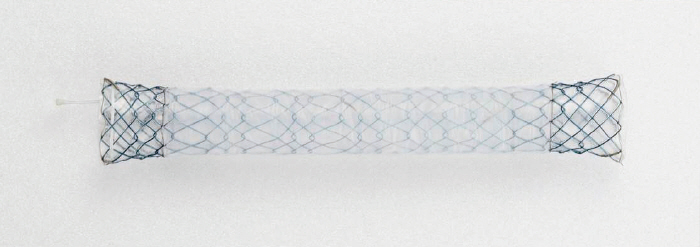Clin Endosc.
2016 Mar;49(2):108-112. 10.5946/ce.2016.029.
Basic Knowledge about Metal Stent Development
- Affiliations
-
- 1Digestive Disease Center, Department of Internal Medicine, Inha University Hospital, Inha University School of Medicine, Incheon, Korea. inos@inha.ac.kr
- KMID: 2165033
- DOI: http://doi.org/10.5946/ce.2016.029
Abstract
- Biliary self-expandable metal stents (SEMS), a group of non-vascular stents, have been used in the palliative management of biliary obstruction around the world. However, there are still unmet needs in the clinical application of biliary SEMS. Comprehensive understanding of the SEMS is required to resolve the drawbacks and difficulties of metal stent development. The basic structure of SEMS, including the materials and knitting methods of metal wires, covering materials, and radiopaque markers, are discussed in this review. What we know about the physical and mechanical properties of the SEMS is very important. With an understanding of the basic knowledge of metal stents, hurdles such as stent occlusion, migration, and kinking can be overcome to develop more ideal SEMS.
MeSH Terms
Figure
Cited by 1 articles
-
Clinical Outcomes of Bilateral Stent-in-Stent Placement Using Self-Expandable Metallic Stent for High-Grade Malignant Hilar Biliary Obstruction
Ja Yoon Heo, Hee Seung Lee, Jun Hyuk Son, Sang Hyub Lee, Seungmin Bang
Yonsei Med J. 2018;59(7):827-833. doi: 10.3349/ymj.2018.59.7.827.
Reference
-
1. Irving JD, Adam A, Dick R, Dondelinger RF, Lunderquist A, Roche A. Gianturco expandable metallic biliary stents: results of a European clinical trial. Radiology. 1989; 172:321–326.
Article2. Dotter CT, Buschmann RW, McKinney MK, Rosch J. Transluminal expandable nitinol coil stent grafting: preliminary report. Radiology. 1983; 147:259–260.
Article3. Isayama H, Nakai Y, Toyokawa Y, et al. Measurement of radial and axial forces of biliary self-expandable metallic stents. Gastrointest Endosc. 2009; 70:37–44.
Article4. Loew BJ, Howell DA, Sanders MK, et al. Comparative performance of uncoated, self-expanding metal biliary stents of different designs in 2 diameters: final results of an international multicenter, randomized, controlled trial. Gastrointest Endosc. 2009; 70:445–453.
Article5. Lee JM, Lee SH, Chung KH, et al. Small cell- versus large cell-sized metal stent in endoscopic bilateral stent-in-stent placement for malignant hilar biliary obstruction. Dig Endosc. 2015; 27:692–699.
Article6. Saito H, Sakurai Y, Takamura A, Horio K. Biliary endoprosthesis using Gore-Tex covered expandable metallic stents: preliminary clinical evaluation. Nihon Igaku Hoshasen Gakkai Zasshi. 1994; 54:180–182.7. Saleem A, Leggett CL, Murad MH, Baron TH. Meta-analysis of randomized trials comparing the patency of covered and uncovered self-expandable metal stents for palliation of distal malignant bile duct obstruction. Gastrointest Endosc. 2011; 74:321–327.
Article8. Isayama H, Komatsu Y, Tsujino T, et al. A prospective randomised study of “covered” versus “uncovered” diamond stents for the management of distal malignant biliary obstruction. Gut. 2004; 53:729–734.
Article9. Telford JJ, Carr-Locke DL, Baron TH, et al. A randomized trial comparing uncovered and partially covered self-expandable metal stents in the palliation of distal malignant biliary obstruction. Gastrointest Endosc. 2010; 72:907–914.
Article10. Kullman E, Frozanpor F, Soderlund C, et al. Covered versus uncovered self-expandable nitinol stents in the palliative treatment of malignant distal biliary obstruction: results from a randomized, multicenter study. Gastrointest Endosc. 2010; 72:915–923.
Article11. Bang BW, Jeong S, Lee DH, Lee JI, Lee SC, Kang SG. The biodurability of covering materials for metallic stents in a bile flow phantom. Dig Dis Sci. 2012; 57:1056–1063.
Article12. Kanasaki S, Furukawa A, Kane T, Murata K. Polyurethane-covered Nitinol Strecker stents as primary palliative treatment of malignant biliary obstruction. Cardiovasc Intervent Radiol. 2000; 23:114–120.13. Maccioni F, Rossi M, Salvatori FM, Ricci P, Bezzi M, Rossi P. Metallic stents in benign biliary strictures: three-year follow-up. Cardiovasc Intervent Radiol. 1992; 15:360–366.
Article14. Miura S, Yoshioka T, Furuichi K, Tanaka T, Kichikawa K, Ohishi H. Mechanical properties of biliary metallic stents: an experimental comparison. Nihon Igaku Hoshasen Gakkai Zasshi. 2003; 63:201–209.15. Dyet JF, Watts WG, Ettles DF, Nicholson AA. Mechanical properties of metallic stents: how do these properties influence the choice of stent for specific lesions? Cardiovasc Intervent Radiol. 2000; 23:47–54.
Article16. Duda SH, Wiskirchen J, Tepe G, et al. Physical properties of endovascular stents: an experimental comparison. J Vasc Interv Radiol. 2000; 11:645–654.
Article17. Jedwab MR, Clerc CO. A study of the geometrical and mechanical properties of a self-expanding metallic stent: theory and experiment. J Appl Biomater. 1993; 4:77–85.18. Stoeckel D, Pelton A, Duerig T. Self-expanding nitinol stents: material and design considerations. Eur Radiol. 2004; 14:292–301.
Article19. Nuutinen JP, Clerc C, Tormala P. Theoretical and experimental evaluation of the radial force of self-expanding braided bioabsorbable stents. J Biomater Sci Polym Ed. 2003; 14:677–687.
Article20. Nakai Y, Isayama H, Kogure H, et al. Risk factors for covered metallic stent migration in patients with distal malignant biliary obstruction due to pancreatic cancer. J Gastroenterol Hepatol. 2014; 29:1744–1749.
Article21. Nakai Y, Isayama H, Kawakubo K, et al. Metallic stent with high axial force as a risk factor for cholecystitis in distal malignant biliary obstruction. J Gastroenterol Hepatol. 2014; 29:1557–1562.
Article22. Kawakubo K, Isayama H, Nakai Y, et al. Risk factors for pancreatitis following transpapillary self-expandable metal stent placement. Surg Endosc. 2012; 26:771–776.
Article23. Isayama H, Nakai Y, Hamada T, Yamamoto N, Koike K. Development of an ideal self-expandable metallic stent design. Gastrointest Interv. 2015; 4:46–49.
Article24. Lee KJ, Chung MJ, Park JY, et al. Clinical advantages of a metal stent with an S-shaped anti-reflux valve in malignant biliary obstruction. Dig Endosc. 2013; 25:308–312.
Article25. Hu B, Wang TT, Wu J, Shi ZM, Gao DJ, Pan YM. Antireflux stents to reduce the risk of cholangitis in patients with malignant biliary strictures: a randomized trial. Endoscopy. 2014; 46:120–126.
Article26. Lee DH, Kang SG, Jeong S, et al. Local delivery system of immune modulating drug for unresectable adenocarcinoma: in vitro experimental study and in vivo animal study. Cardiovasc Intervent Radiol. 2006; 29:832–837.
Article27. Song TJ, Lee SS, Yun SC, et al. Paclitaxel-eluting covered metal stents versus covered metal stents for distal malignant biliary obstruction: a prospective comparative pilot study. Gastrointest Endosc. 2011; 73:727–733.
Article28. Jang SI, Kim JH, You JW, et al. Efficacy of a metallic stent covered with a paclitaxel-incorporated membrane versus a covered metal stent for malignant biliary obstruction: a prospective comparative study. Dig Dis Sci. 2013; 58:865–871.
Article29. Isayama H, Kawabe T, Nakai Y, et al. Management of distal malignant biliary obstruction with the ComVi stent, a new covered metallic stent. Surg Endosc. 2010; 24:131–137.
Article30. Perri V, Boskoski I, Tringali A, et al. Prospective evaluation of the partially covered nitinol “ComVi” stent for malignant non hilar biliary obstruction. Dig Liver Dis. 2013; 45:305–309.
Article31. Park do H, Lee SS, Lee TH, et al. Anchoring flap versus flared end, fully covered self-expandable metal stents to prevent migration in patients with benign biliary strictures: a multicenter, prospective, comparative pilot study (with videos). Gastrointest Endosc. 2011; 73:64–70.32. Moon SH, Kim MH, Park do H, et al. Modified fully covered self-expandable metal stents with antimigration features for benign pancreatic-duct strictures in advanced chronic pancreatitis, with a focus on the safety profile and reducing migration. Gastrointest Endosc. 2010; 72:86–91.
Article
- Full Text Links
- Actions
-
Cited
- CITED
-
- Close
- Share
- Similar articles
-
- Stepwise Algorithmic Approach to Endoscopic Removal of Biliary Partially Covered and Uncovered Self-Expanding Metal Stents (with Videos)
- In-stent Radiofrequency Ablation for Tumor Ingrowth Causing Self-expandable Metal Stent Occlusion
- Endoscopic Removal of a Proximally Migrated Metal Stent during Balloon Sweeping after Stent Trimming
- Past, Present, and Future of Gastrointestinal Stents: New Endoscopic Ultrasonography-Guided Metal Stents and Future Developments
- Follow-up computed tomography can prevent stent migration after endoscopic ultrasound-guided hepaticogastrostomy


